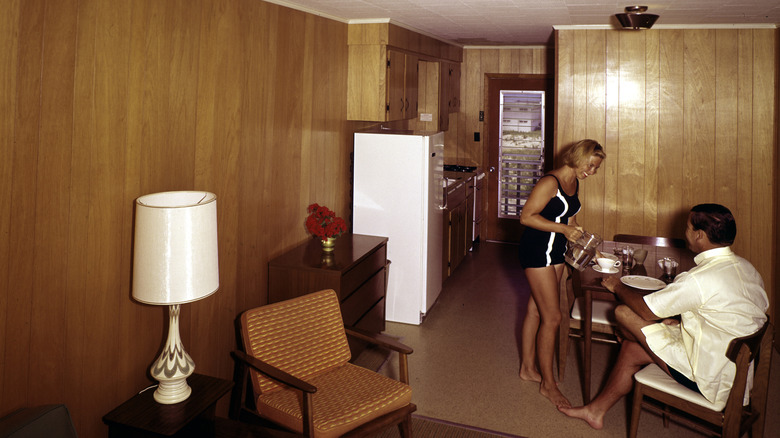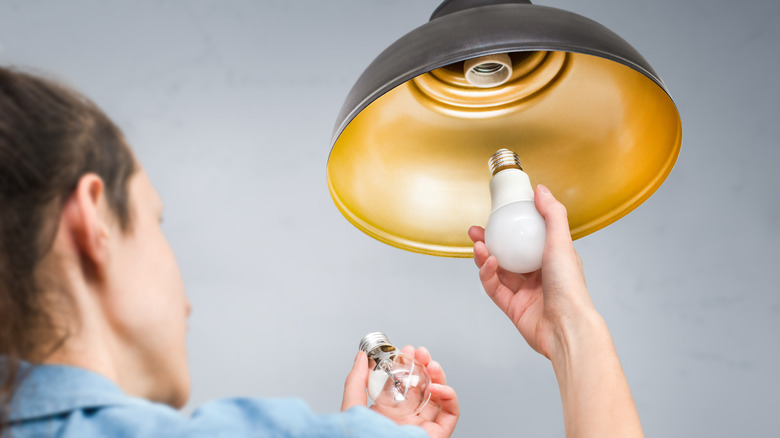Turn This '80s Kitchen Paneling Trend Modern With A Cost-Effective Method
While some retro kitchen designs are worthy of a comeback, others are better left to dignified retirement. Certain trends, such as the wood-paneled walls found in many a 1980s home, have been enjoying a revival in recent years — but only with some modern caveats. That orangey wood paneling of bygone decades, composed of cheap veneer, is definitely passe. If your kitchen is frozen in time with that particular wall paneling, the good news is you can bring it into the modern century with a cost-effective spruce-up.
For the inside scoop on modernizing old-school paneled walls, Food Republic spoke with Courtney Batten, founder and lead interior designer at Paige Studio. Her firm specializes in historic home renovations, so Batten has tackled her share of outmoded wood paneling. "Paint is the most obvious and cost-effective way to transform dated wood paneling, especially if the goal is a lighter, fresher look," she shared. While any kind of interior paint can be used, a satin-finish latex is a good choice, as it's easy to apply and offers good coverage for wood veneer.
Some key issues with wood paneling are that it darkens a room and makes a space look smaller — neither of which is desirable for homeowners who want a bright and airy look in their kitchen. A relatively quick job of cleaning, sanding, priming, and painting can completely transform the dark, closed feel of a paneled room. Be sure to avoid the worst kitchen paint colors — otherwise, you've wasted your effort in covering up the dark wood.
Other options to make wood paneling work
Other non-paint options can be the right approach for your specific kitchen and wood paneling. If you're working with real wood, sanding and re-staining it can definitely be worth the effort and investment. "In the right context, original wood paneling will add depth, patina, and soul to your space; qualities that are increasingly valued (and rare) in today's sea of builder basic homes," Courtney Batten explained.
If you don't want the time or expense of refinishing the paneling, however, yet another alternative is keeping it as is and changing elements of the kitchen around it. "Updating your cabinets, countertops, plumbing fixtures, and even your lighting can completely reframe how that paneling reads in the space," Batten suggested. "For instance, swapping overly warm bulbs for a neutral color temperature can tone down that tell-tale '80s orange hue and make the paneling feel intentional and architectural rather than dated."


